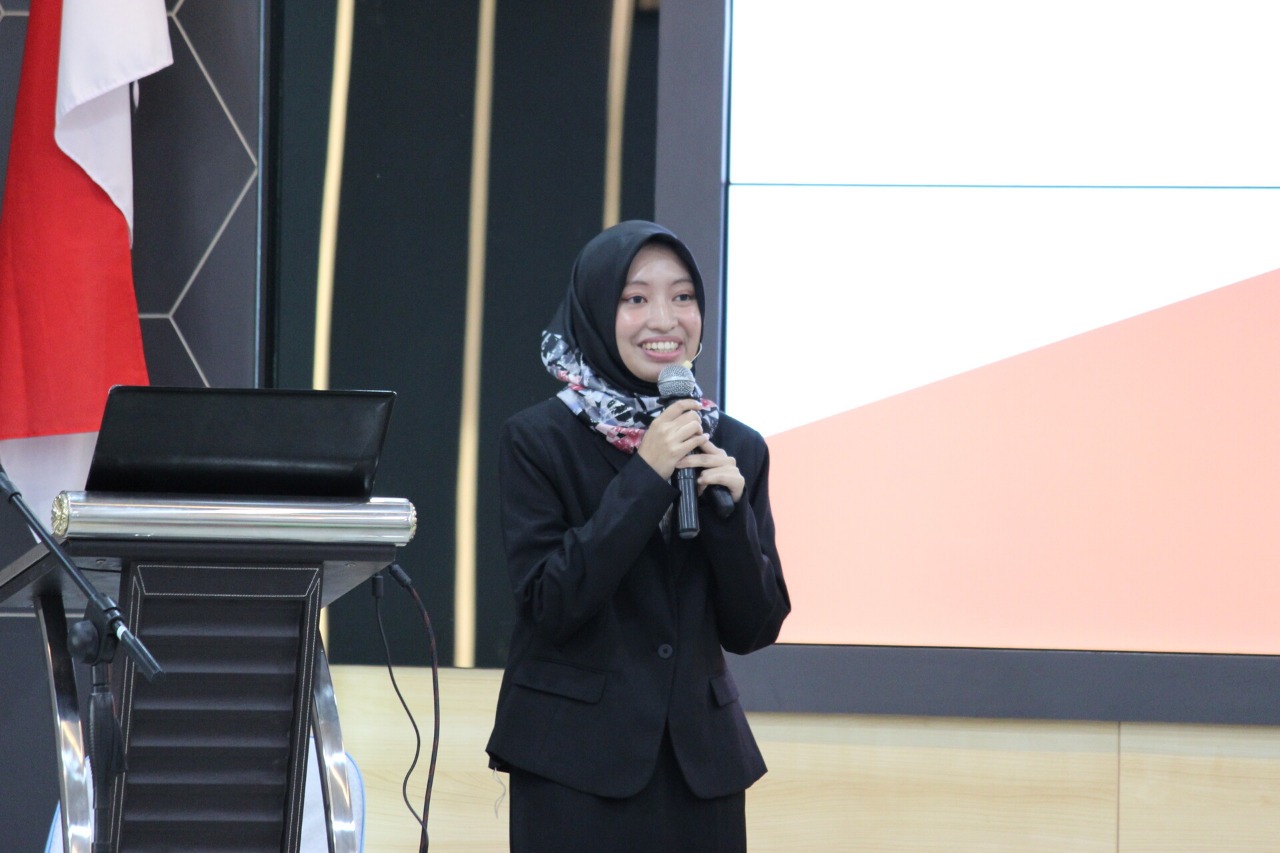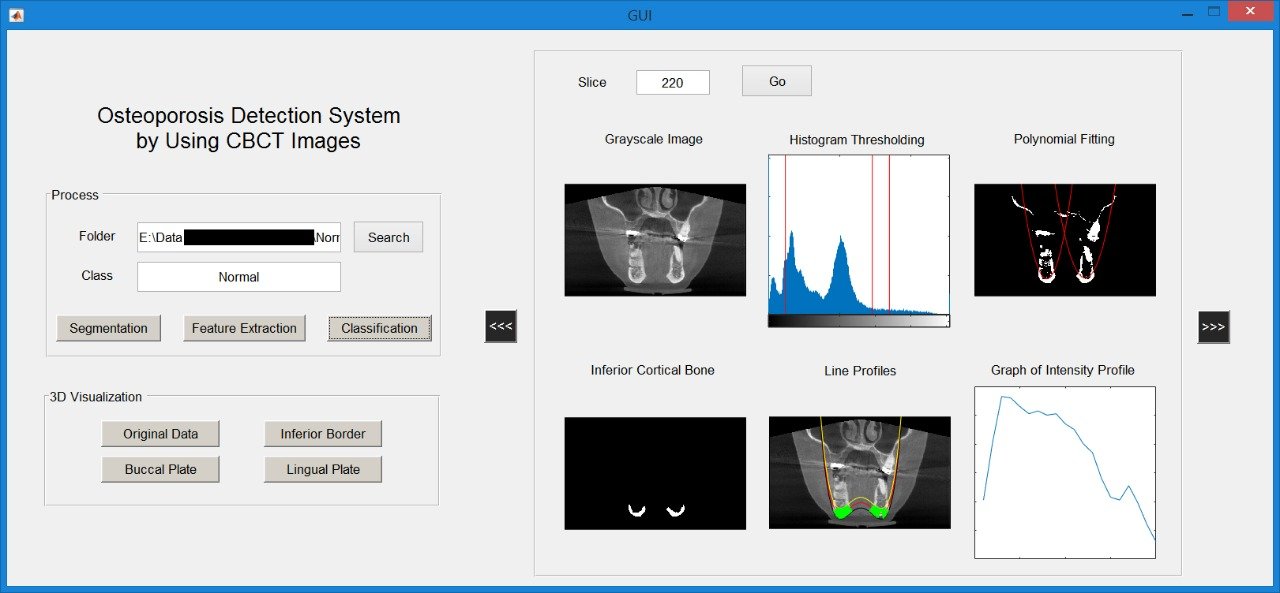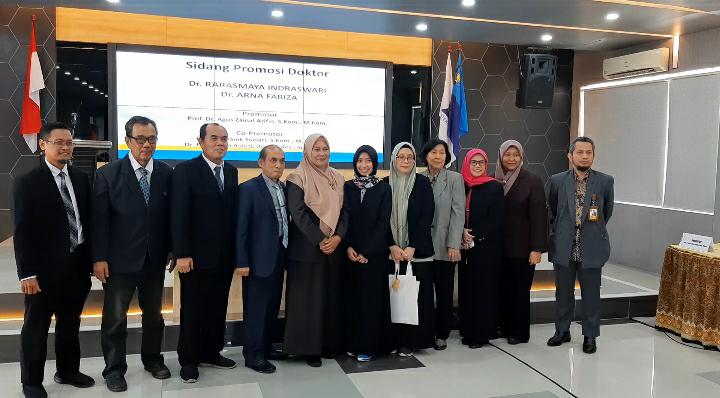Create An Osteoporosis Detection System, Reach The Doctor Title At 24 Years Old In ITS

Rarasmaya Indraswari when presenting her dissertation in the doctoral promotion session in the Department of Informatics Engineering
ITS Campus, ITS News-amid the rapid development of today’s technology, various problems can also be solved with existing technology, including in the world of health. Therefore, it is still difficult for early detection of osteoporosis disease attracts the attention of Rarasmaya Indraswari, the doctoral program student of The Departement of Computer Science Institut Teknologi Sepuluh Nopember (ITS).
Through a dissertation titled Osteoporosis Detection System based on the lower jaw Cortical Bone feature in Cone-Beam Computed Tomography (CBCT), the woman who is familiarly called Raras successfully holds a doctorate in youth, 24 years after graduation in the doctoral promotion session held at Department of Informatics Engineering ITS, Thursday (20/2).
This girl who born in Kediri on the 17th of July 1995, explains that during this time, symptoms of osteoporosis are often undetectable and are not felt by the sufferer. “The disease that attacks the human skeleton system is usually newly detected when the sufferer is already experiencing fractures,” she said.

The user interface display of Rarasmaya Indraswari’s Osteoporosis detection system in her doctoral dissertation
Until now, the girl added, the osteoporosis detection standard is to measure bone mineral density or commonly called bone mineral density (BMD) on the backbone using a Dual Energy X-Ray device Absorptiometry (DEXA).
The results of the measurements are correlated with the width of the lower jaw cortical bone in the two-dimensional image (2D) of the human jaw. Cortical bones are tissue-forming bones. The 2D jaw image is now easy to obtain because of its reasonably affordable price.
However, said Raras, there is a problem that results in showing some images of teeth overlapping or called superimposition. “For that, with CBCT, can be obtained three-dimensional image (3D) jaw bone, so that it becomes clearer and detail,” she explained.

Rarasmaya Indraswari (six from the right), a Doctorate of Computer Science at the age of 24 after the doctoral promotion session
The proposed detection system of Raras was developed automatically based on the feature of the lower jaw cortical bone on the CBCT. The system consists of four main stages, starting with preprocessing to perform slicing or cutting on the CBCT image, the lower jaw cortical bone segmentation, the extraction of cortical bone-frequency features, as well as classifications to determine whether a person belongs to a normal group, osteopenia, or osteoporosis.
In the first stage, said Raras, the jaw bone is segmented into three parts using the value of grayscale intensity and the shape of the cortical bones. “The method is chosen because it is adaptive to every slice or piece of CBCT,” added the alumnus of 5 Senior High School Surabaya.
The result segmentation of the inferior cortical bones is then used in the extraction process. The extraction results are then used to classify the data into normal groups, osteopenia, and osteoporosis using the Multiclass SVM method.
Using 30 CBCT data, which is accompanied by the BMD measurement of the DEXA device, the system proposed by Raras has been successfully conducted osteoporosis detection with 87.10 percent of accuracy.
The alumnus of The Departement of Informatics Engineering ITS has successfully completed her undergraduate education in the seven semesters stating that it is necessary to socialize the results of its research on practitioners, in this case, the dentists. Raras hopes she can contribute to improving the quality of life of society through research she has completed. “Hopefully it can be useful to the wider community,” she concluded.(yus/rev/ITS Public Relations)
Related News
-
ITS Develops Four‑Legged Dog Robot with Sensors and Navigation
ITS Campus, ITS News – Institut Teknologi Sepuluh Nopember (ITS) is further solidifying its role in robotic technology
February 24, 2020 10:02 -
ITS Mathematics Alumnus Creates EEG-Based Brain Research Technology
ITS Campus, ITS News — One of the graduates of the Institut Teknologi Sepuluh Nopember (ITS) has succeeded in
February 24, 2020 10:02 -
ITS Promotes FAST-D Scholarship, Unggul, and Global Excellence Scholarship
ITS Campus, ITS News – Institut Teknologi Sepuluh Nopember (ITS) always shows its commitment in supporting students to develop their best
February 24, 2020 10:02 -
Supporting the Implementation of SPMB 2025, ITS Develops the SENOPATI Platform
ITS Campus, ITS News – Showing its contribution in the field of education, Institut Teknologi Sepuluh Nopember (ITS) has redeveloped a platform
February 24, 2020 10:02
